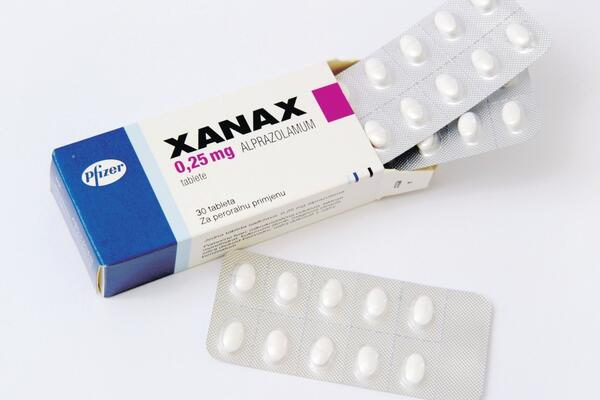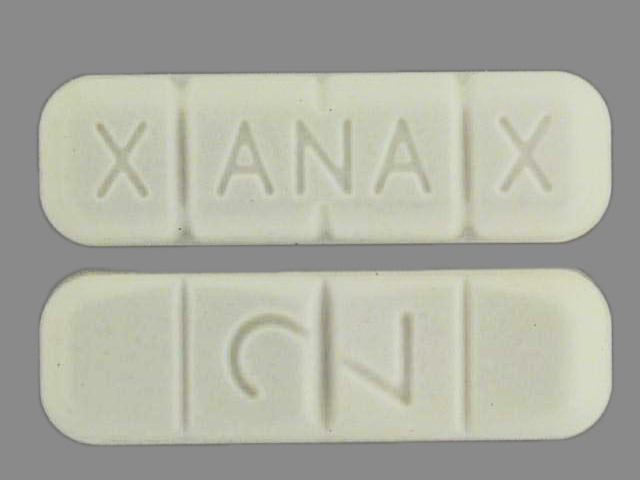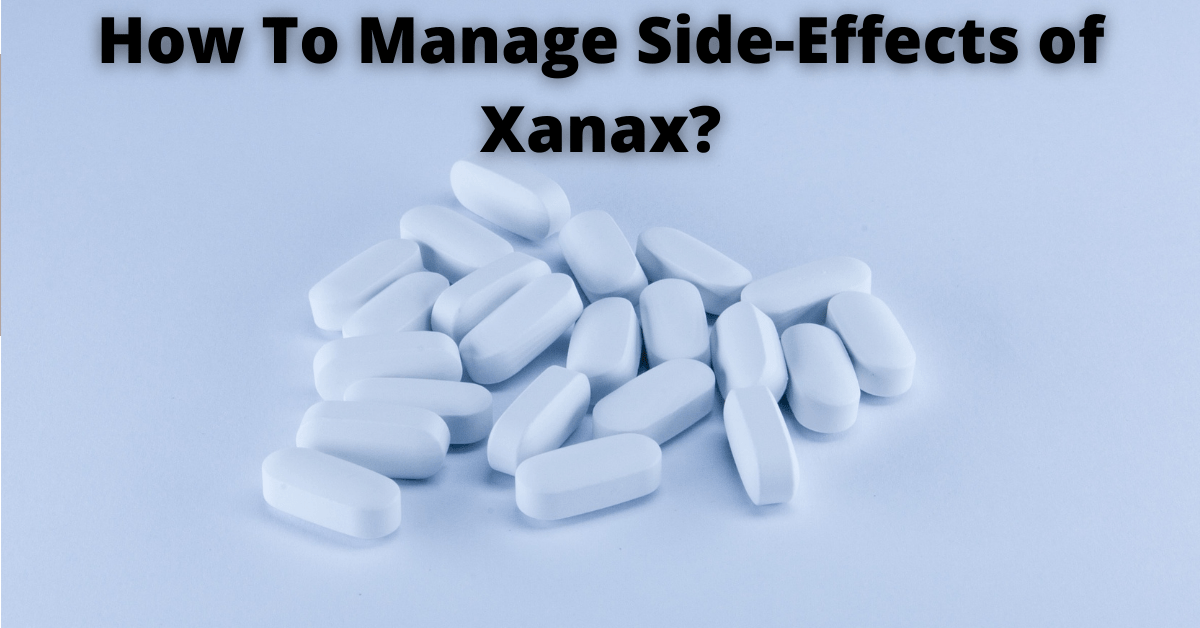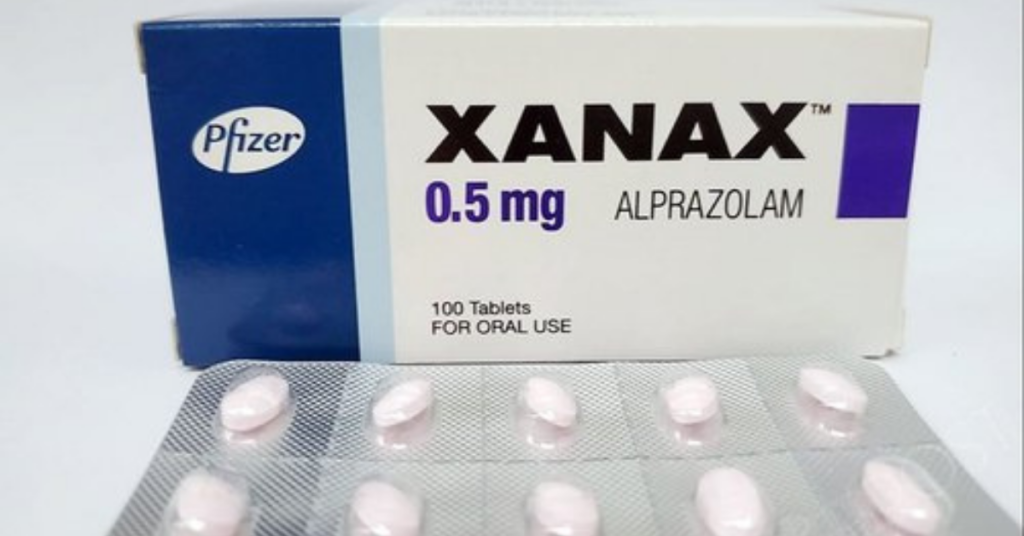Xanax is a powerful drug that helps to treat anxiety. One can find this in the class C category of prescription medications, and it has been shown to reduce symptoms of depression as well. In this article, we will discuss how Xanax works, its side effects, and whether or not one can take it for anxiety treatment.
Contents
What Is Xanax?
 Xanax is a brand name for the generic drug Alprazolam, which is in class C of medications. It works by affecting neurotransmitters to balance out chemicals in the brain that cause anxiety and panic disorders. This results in calming your mind down, making you feel more relaxed. Xanax can be prescribed both as an oral medication or given intravenously (IV) if necessary; it will work either way! You may find yourself feeling like you don’t need Xanax after taking it at first because your symptoms are alleviated much faster than before; however, do not stop using this medicine without consulting with your doctor first! Although rare, there have been cases where patients began experiencing withdrawal effects when they stopped using Xanax abruptly instead of having their dose slowly reduced.
Xanax is a brand name for the generic drug Alprazolam, which is in class C of medications. It works by affecting neurotransmitters to balance out chemicals in the brain that cause anxiety and panic disorders. This results in calming your mind down, making you feel more relaxed. Xanax can be prescribed both as an oral medication or given intravenously (IV) if necessary; it will work either way! You may find yourself feeling like you don’t need Xanax after taking it at first because your symptoms are alleviated much faster than before; however, do not stop using this medicine without consulting with your doctor first! Although rare, there have been cases where patients began experiencing withdrawal effects when they stopped using Xanax abruptly instead of having their dose slowly reduced.
What Does Xanax Treat?
 Xanax is a great medication for treating symptoms of anxiety, especially social phobia, and panic disorder. It can help to treat issues with sleep if they are affecting your daily life as well.
Xanax is a great medication for treating symptoms of anxiety, especially social phobia, and panic disorder. It can help to treat issues with sleep if they are affecting your daily life as well.
This medication is not recommended for long-term use, as it can cause addiction. If you’re struggling with anxiety and would like to try out Xanax, speak with your doctor about whether this medication is the best treatment option for you!
This medication is in class C of medications. Everyone now this as a form of habit-forming.
Symptoms of Anxiety It Treats
These are some of the symptoms of anxiety that Xanax can help treat:
- Fear of social situations or other uncomfortable feelings
- Panic attacks, which are episodes where your body overreacts to an anxious feeling and
- can cause intense physical symptoms like heart palpitations, shortness of breath, dizziness, and more
- Sleep problems that are related to anxiety
- Worrying too much about things or feeling like you can’t stop your thoughts from racing
- Having a hard time concentrating because of worry or fear
- Not being able to control your feelings or stop them from coming up
Working of Xanax

- The working of Xanax is by balancing the chemicals in the brain. There are various neurotransmitters like serotonin and GABA that get unbalanced when there is an anxiety disorder. Xanax brings these levels to balance and this reduces the anxiety symptoms.
- It can be given as an oral medication or intravenously depending on the requirement of a person. It starts working immediately if taken orally while for IV, it takes a few minutes to start showing results.
- This medication is not for long-term use and one should use this only if the person is suffering from anxiety disorders. It can cause addiction if used for a longer period of time.
- Xanax works quickly- usually within 30 minutes- to ease symptoms of anxiety. While it’s not recommended for long-term use, Xanax can be an effective way to manage your anxiety symptoms when they’re severe enough to interfere with daily life.
Duration of Action
The duration of action may vary from person to person but usually, it lasts up to six hours. This means that you would need to take it again after six hours if the symptoms reappear.
However, always consult your doctor before stopping this medicine abruptly because some people have experienced withdrawal effects when they discontinued it without reducing the dose.
Dosage of Xanax

- The dosage of Xanax usually starts from 0.25 mg. One can take this to a maximum of four milligrams per day, depending on the requirement.
- It is always better to start with a lower dose and then increase it gradually if there is no relief from symptoms. You should not take Xanax more than what the doctor prescribes.
- Xanax comes in tablet form, and the dosage will be printed on the label. If you’re unsure about how much to take, ask your pharmacist or doctor for advice.
- Some people may be prescribed a liquid form of Xanax, which you take as an oral syringe.
- Xanax can be quite effective for some people who are struggling to manage their anxiety symptoms. However, it’s not safe for long-term use because it can cause addiction if used regularly over time.
- If you think that this medication might help your condition but don’t want to become dependent on it, talk with your doctor about the best way to take Xanax and how often before starting treatment.
Benefits of Xanax

There are many benefits of Xanax one can take when it comes to treating anxiety disorders. Some of the benefits are:
Helps To Relax Body
This medication always helps to relax the body and mind so that you can get relief from anxiety symptoms.
Reduces Anxiety Symptoms
The medication helps to reduce the severity of your anxiety by balancing out neurotransmitters in the brain. The levels are brought back to balance which results in a reduction of feelings like fear, panic attack, etc.
Improves Quality Of Life
When it comes to treating an anxiety disorder with Xanax, this is one drug that can be effective for both short-term and long-term use as well. Although most people will only need a prescription refill every six months or so, some patients have seen their quality of life improve significantly after taking Xanax consistently over time without feeling dependent on it.
Improves Sleep Pattern
Another benefit is improvement in sleep patterns. The medication helps in getting good sleep and reducing the anxiety symptoms that keep you awake at night.
Makes You Feel Relaxed
The medication can make you feel relaxed and calm, which is important for people who are suffering from the disorder. It brings down all the heightened anxiety levels and reduces panic attacks right away.
Side Effects of Xanax

While taking this drug, there could be some side effects that may occur such as:
Drowsiness
This is one of the most common side effects that people experience while taking Xanax. It’s because the drug slows down brain activity and can make you feel tired.
Dizziness
The medication can also cause dizziness, especially when you first start taking it or if you increase your dose too quickly. Be careful when getting up from a seated or lying position to avoid any falls.
Nausea And Vomiting
Xanax may also cause nausea and vomiting in some people, particularly if they take it on an empty stomach. Try to take it with food if this is a problem for you.
Dry Mouth
Another frequent side effect is dry mouth caused by decreased production of saliva. This can be treated by drinking plenty of water and using a saliva substitute when needed.
Constipation
Since Xanax slows down the movement in your digestive tract, it can lead to constipation too. You may also feel bloated because of this. To avoid these problems, drink plenty of fluids and exercise regularly while taking Xanax in order to keep things moving through your system properly.
Headaches
Some people who take higher doses experience headaches or dizziness as well. If you find yourself suffering from either one or both side effects, make sure that you speak with your doctor about lowering your dosage until they go away before continuing treatment once again at an even lower dose if necessary.
Decreases Appetite Or Weight Loss
Another common side effect is a decrease in appetite. Xanax can also cause weight loss and you might find yourself losing a few pounds while on this medication. Just make sure that you don’t reduce your food intake too much or else it could lead to malnutrition or other problems in the long run, especially if you’re taking this drug over an extended period of time.
How To Manage Side-Effects of Xanax?

There can be many ways through which one can manage side effects such as:
- To overcome drowsiness, use a non-drowsy form of alprazolam if possible. If you’re taking Xanax in order to help with sleep problems, make sure that you don’t take it too close to bedtime when drowsiness can become an issue and affect your sleep pattern. You may also want to avoid driving or any other activity requiring alertness after taking the drug until you know how much it affects you.
- To avoid falls and other accidents, make sure that you don’t stand up too quickly from a seated or lying position while taking Xanax in order to maintain your balance properly when dizzy spells occur after taking the medication. You can also try stopping treatment for several days if these symptoms are very bothersome before resuming once again at gradually lower doses until they go away entirely without causing any further problems.
- If nausea becomes an issue while on Xanax, it may be helpful to take another dose of the drug after throwing up rather than taking just one single pill every time since some people have more sensitive stomachs than others do who tend to vomit after taking the medication.
- To help with this side-effect, drink plenty of fluids and eat high fiber foods while on Xanax as well as getting regular exercise to stimulate your bowels. You can also try using a stool softener or laxative if needed but only after consulting with your doctor first.
- In order to counteract any weight loss that may occur from taking Xanax, make sure that you continue eating healthy and balanced meals even if you’re not feeling very hungry. If the problem persists, speak with your healthcare provider about it since there could be other underlying reasons for why you’re losing weight while on this drug. Try not to obsess over every pound that you may lose since Xanax can definitely cause some fluctuation in weight.
Alternatives of Xanax
There can be many alternatives to Xanax for various reasons.
Benzodiazepines
 This group of medications is some alternatives to Xanax that can provide relief from anxiety and panic disorders, however, they may not work as well for everyone. Some people who have taken benzodiazepines in the past find that tolerance quickly builds up so they need higher and higher doses to get the same effect which could lead to dependence over time if you’re not careful. These types of drugs also tend to cause more side effects than Xanax does such as drowsiness, dizziness, poor coordination, and memory problems.
This group of medications is some alternatives to Xanax that can provide relief from anxiety and panic disorders, however, they may not work as well for everyone. Some people who have taken benzodiazepines in the past find that tolerance quickly builds up so they need higher and higher doses to get the same effect which could lead to dependence over time if you’re not careful. These types of drugs also tend to cause more side effects than Xanax does such as drowsiness, dizziness, poor coordination, and memory problems.
Buspirone
 This drug is an alternative to benzodiazepines. This drug helps with generalized anxiety disorder although it usually takes a few weeks to notice any improvement in symptoms. Side effects associated with buspirone are generally mild and not as dangerous compared to other medications such as Xanax so it’s a safer alternative if you can’t take benzodiazepines for whatever reason.
This drug is an alternative to benzodiazepines. This drug helps with generalized anxiety disorder although it usually takes a few weeks to notice any improvement in symptoms. Side effects associated with buspirone are generally mild and not as dangerous compared to other medications such as Xanax so it’s a safer alternative if you can’t take benzodiazepines for whatever reason.
Herbal Remedies
 There are plenty of herbal remedies that everyone uses throughout time all around the world. But there isn’t enough evidence to support them completely. This is because they haven’t gone through extensive testing as prescription drugs do before making it onto the market. Some examples of natural alternatives include kava which is helpful for anxiety-related disorders; lavender oil which helps treat insomnia; and chamomile tea also helps in calming nerves when feeling tense or stressed out.
There are plenty of herbal remedies that everyone uses throughout time all around the world. But there isn’t enough evidence to support them completely. This is because they haven’t gone through extensive testing as prescription drugs do before making it onto the market. Some examples of natural alternatives include kava which is helpful for anxiety-related disorders; lavender oil which helps treat insomnia; and chamomile tea also helps in calming nerves when feeling tense or stressed out.
Conclusion
In conclusion, Xanax is still the best medication to use for the treatment of anxiety and panic disorders in my opinion. This is because it’s safe, easy to take, effective, and has little risk for dependency. However, there are some alternatives out there that may work just as well or better than Xanax. So you can speak with your doctor if you’re having trouble finding relief from whatever symptoms you have at hand.
If you are looking for affordable Online Counseling MantraCare can help: Book a trial therapy session


